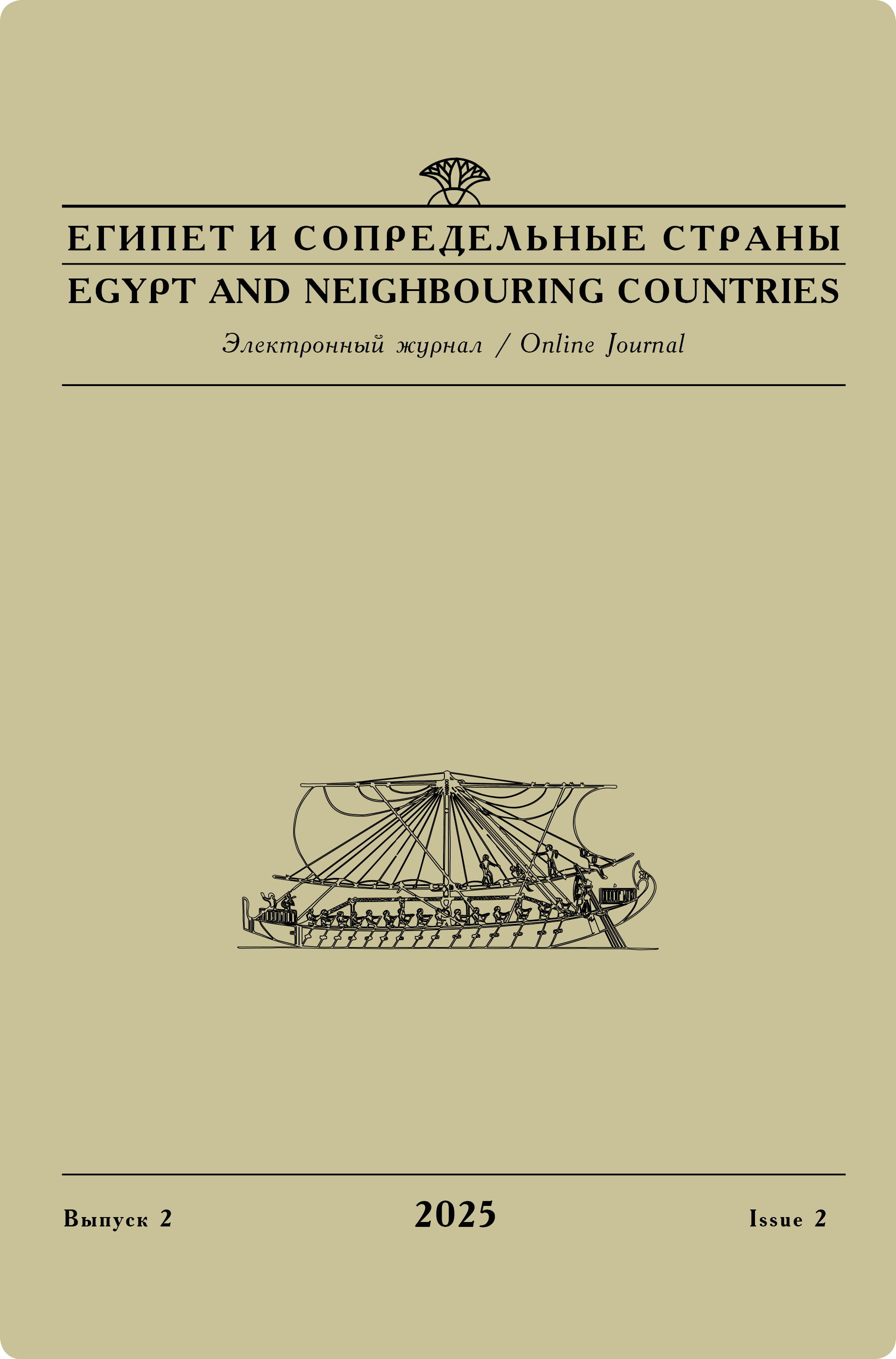Issue 4, 2020
V. I. Yarmolovich
Egipetskie uzkogorlye kuvshiny Pozdnego i ptolemeevskogo periodov (VI–I vv. do n. e.): morfologicheskie izmeneniia kak svidetel'stvo kul'turnogo vzaimodeistviia [Egyptian globular jugs of the Late and Ptolemaic periods (the 6th–1st centuries BCE): morphological changes as evidence of cross-cultural contacts]
The paper is devoted to the Egyptian globular jugs, which are typical for the Late and Ptolemaic periods. In publications these jugs are called ‘globular jugs/juglets’ or ‘cruchon globulaire’, ‘aryballoid lekythoi’ or ‘lécythes-aryballisques’, ‘lécythes’, or ‘bottles’.
Seven subtypes of the jugs have been identified according to their morphological features. The clays and their inclusions are studied in this paper as well as dating of the subtypes. These jugs are important for dating the layers where they are discovered; they also demonstrate the cross-cultural contacts of ancient Egyptians with populations of neighbouring countries.
The globular jugs that have been discovered by the Russian archaeological mission of the Centre
for Egyptological Studies of the Russian Academy of Sciences during the seasons in Memphis are
published in this paper.
Keywords:
pottery, jug, Memphis, Late Period, lekythos, cross-cultural contacts.
Original language — Russian.
DOI: 10.24412/2686-9276-2020-00016.
Referring: Yarmolovich V. I. Egyptian globular jugs of the Late and Ptolemaic periods (the 6th–1st centuries BCE): morphological changes as evidence of cross-cultural contacts [in Russian] // Egypt and neighbouring countries 4 (2020): 70–111. DOI: 10.24412/2686-9276-2020-00016.
Read full article




